We all know about peppermint and spearmint, but do you know the best Types of Mint Varieties? We have a great list to share!
There are many mint varieties famous for their refreshing taste. These different Types of Mint offer a diverse range of flavors and scents, making them a fascinating subject of exploration. In this article, you will delve into the captivating world of many forms of this amazing herb.
Types of Mints
1. Spearmint
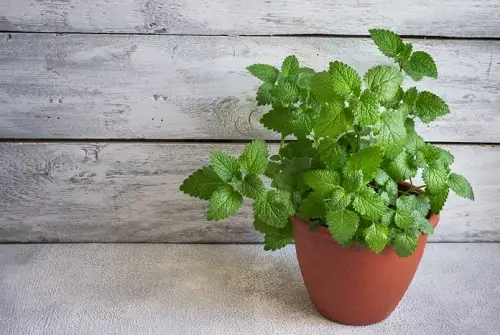
Botanical Name: Mentha spicata
USDA Zones: 4 to 11
Spearmint or Common mint is probably number one when it comes to culinary uses. It has narrow, green leaves with a pleasing scent, milder than peppermint. Growing it in pots is always a good idea as it is invasive by nature.
2. Pepper Mint
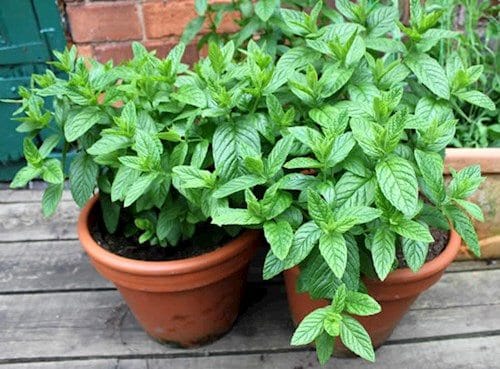
Botanical Name: Mentha × piperita
USDA Zones: 5-11
Pepper Mint—a cross of two mints (Watermint and Spearmint) has a very strong taste, sweet aroma, and cooling, pungent aftertaste. You can easily propagate it through stem cuttings and plant them in fertile and well-drained soil.
3. Apple Mint
Botanical Name: Mentha suaveolens
USDA Zones: 5-9
This species is also known by various names like Wooly or Pineapple Mint. It has light green round foliage and pale pink flowers that appear from early to mid-summer. People use it in tea and for garnishing salads.
4. Banana Mint
Botanical Name: Mentha arvensis ‘Banana’
USDA Zones: 5-11
The fruity aroma of this herb resembles a banana, which attracts bees. Its small lilac-colored flowers bloom throughout the summer. Banana Mint can be used in ice cream, cookies, muffins, and fruit salads.
5. Chocolate Mint
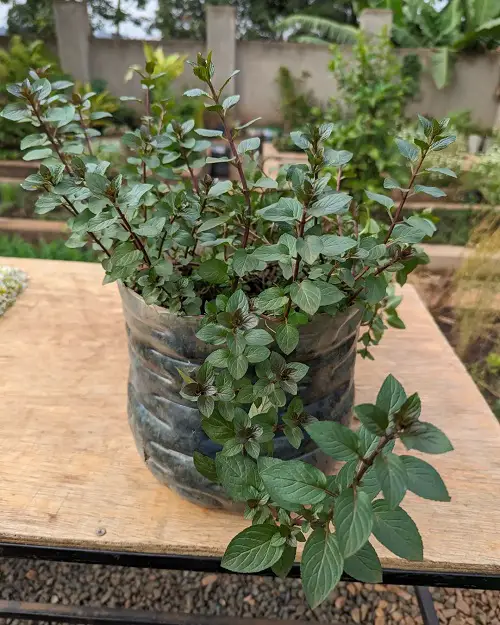
Botanical Name: Mentha × piperita ‘Chocolate Mint’
USDA Zones: 5a-9a
Chocolate Mint is famous for its minty chocolate-flavored aroma. Its round spear-shaped foliage blooms stunning lavender flowers in summer. Though it can thrive in full sun, save it from the afternoon sun and never allow the soil to dry out completely.
6. Watermint

Botanical Name: Mentha aquatica
USDA Zones: 5a-9b
Watermint also known as ‘Mentha citrata,’ grows mostly in waterways near rivers. It has an oval-looking and toothed, aromatic foliage. This vigorous plant expands through runners.
7. Lavender Mint
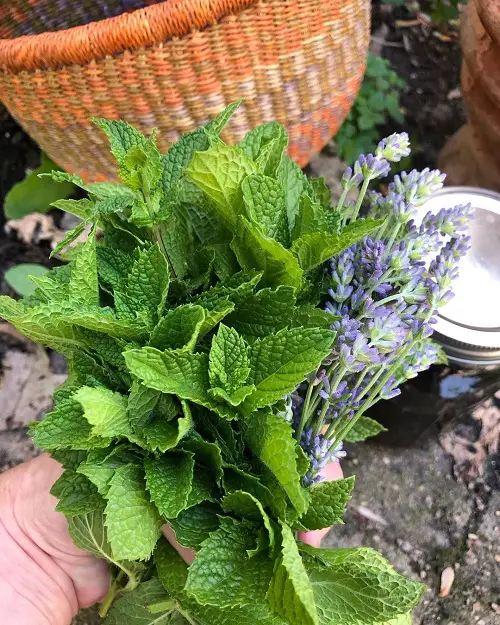
Botanical Name: Mentha piperita ‘Lavendula’
USDA Zones: 3-7
Lavender Mint is one of the most beautiful types of mints that you can grow for ornamental purposes. Plant this 2-foot-tall variety in your garden as an informal hedge.
8. Slender Mint
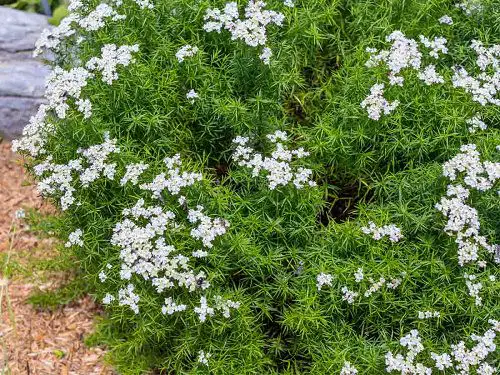
Botanical Name: Mentha diemenica
USDA Zones: 4-8
This dwarf 6 inches high mint is frost-hardy and native to Australia. Slender mint looks different from other types of mints. It can be used as common mints. Learn more about it here.
9. Egyptian Mint
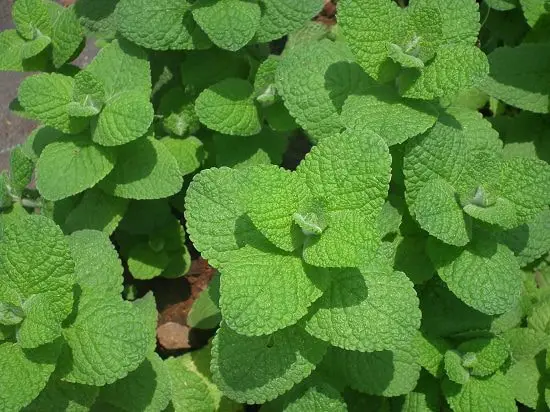
Botanical Name: Mentha niliaca
USDA Zones: 5-9
Egyptian mint is as old as ancient Egypt and has a reference to the Pharaoh’s times as well. This culinary herb has a scent like an applemint and the flavor is milder than peppermint and spearmint. It has a strong, upright stem with fuzzy leaves.
10. Pennyroyal
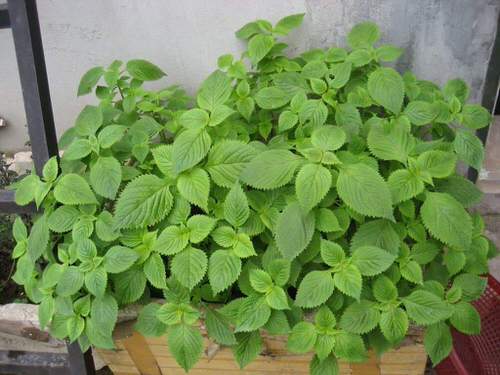
Botanical Name: Mentha pulegium
USDA Zones: 6–9
A large number of Roman cookbooks have a mention of Pennyroyal Mint. Grow it in a vegetable garden to sort out pest problems. It has tiny, delicate green leaves with stunning pale blue or lavender flowers.
11. Horsemint
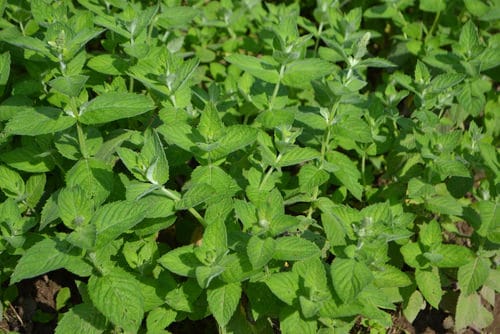
Botanical Name: Mentha longifolia
USDA Zones: 4-9
This upright herb can be up to 3-4 feet tall, bears flower spikes of attractive pale pink or lilac color, and has hairy foliage. It’s also known as silver mint. It has more medicinal uses, which makes it a perfect addition to a medicinal garden.
12. Corsican Mint
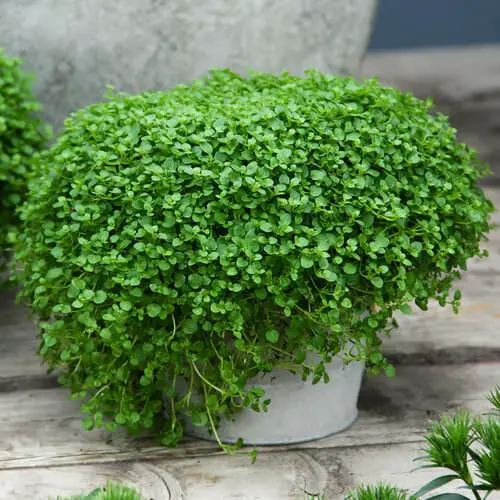
Botanical Name: Mentha requieni
USDA Zones: 7-9
Corsican mint is native to Corsica and has trails of round, aromatic leaves with small, fragrant flowers. Like most mints, it is low-growing and invasive. Corsican mint helps to enhance the flavor of the vegetable crops growing around it and is used in teas and salads.
13. Eau de Cologne Mint

Botanical Name: Mentha piperita citrata
USDA Zones: 3-9
Also known as the orange and bergamot mint, it has citrus-flavored perfumed leaves that are elliptical in shape on beautiful burgundy stems. Orange mint is famous for its aromatic attributes and is used as an ingredient in the preparation of Jellies, salads, and sauces.
14. Strawberry Mint
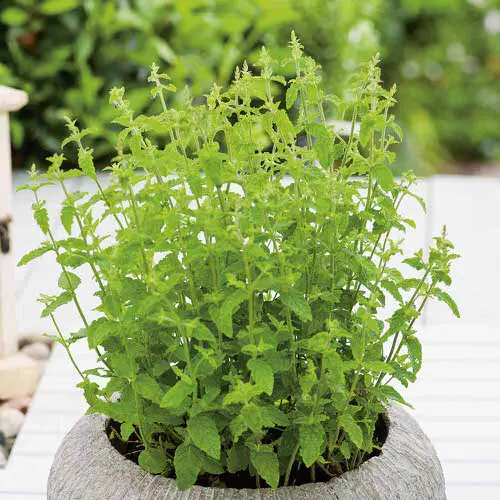
Botanical Name: Mentha spicata subsp. citrata ‘Strawberry’
USDA Zones: 4-9
This compact mint variety is suitable for growing indoors in hanging baskets and pots. It has a fruity fragrance that is a mix of strawberry and mint. Chop it to add to salads and desserts or make an iced tea.
15. Grapefruit Mint

Botanical Name: Mentha x piperita ‘Grapefruit’
USDA Zones: 6-11
What sets this mint apart from the rest is its intoxicating grapefruit-like fragrance. The fruit-flavored deep green leaves of grapefruit mint go well with fruit desserts. You can also add it to seafood and lamb salad for citrusy zest.
16. Hemingway Peppermint
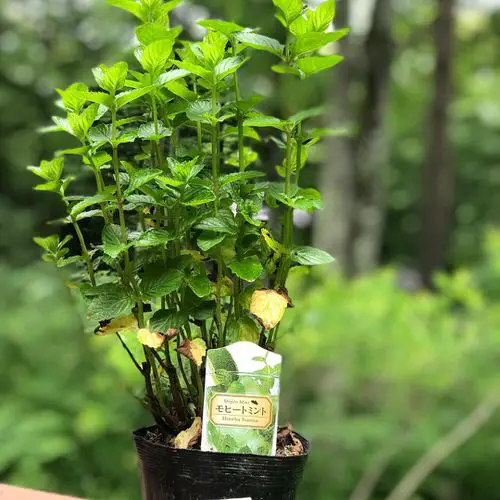
Botanical Name: Mentha nemorosa
USDA Zones: 3-9
This American variety of wild mint is edible and can be eaten fresh or cooked into dishes that add a beautiful aroma and pleasant taste. You can also enjoy the mint leaves in the form of herbal teas and other cold beverages.
17. Ginger Mint

Botanical Name: Mentha x gracilis
USDA Zones: 5-9
Ginger mint is also known as Vietnamese mint because it’s popular in Vietnamese cooking. It smells like spearmint with a hint of fruity ginger-like fragrance, therefore the name. Like other types of mints, it grows aggressively, so it’s better to confine it in a pot before planting it on the ground.
18. Mojito Mint

Botanical Name: Mentha × villosa
USDA Zones: 5-9
Also, goes by the common name Cuban mint (Yerba Buena); compared to other varieties, it has a warm and mild flavor. Mojito Mint can be grown best in warm, temperate and mildly subtropical climates.
19. Hart’s Pennyroyal
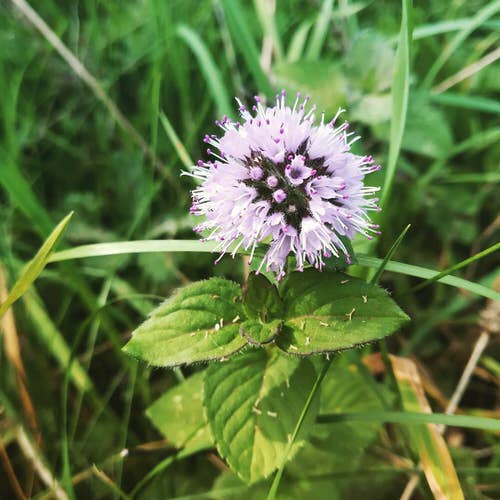
Botanical Name: Mentha cervina
USDA Zones: 6-9
Another unique variety from the mint family, Hart’s Pennyroyal is mainly known for its fragrant leaves and colorful blossoms, which have a very intense minty flavor similar to spearmint. It is widely used to season fish, meats, and other culinary items besides the popular teas and beverages.
20. American Wild Mint
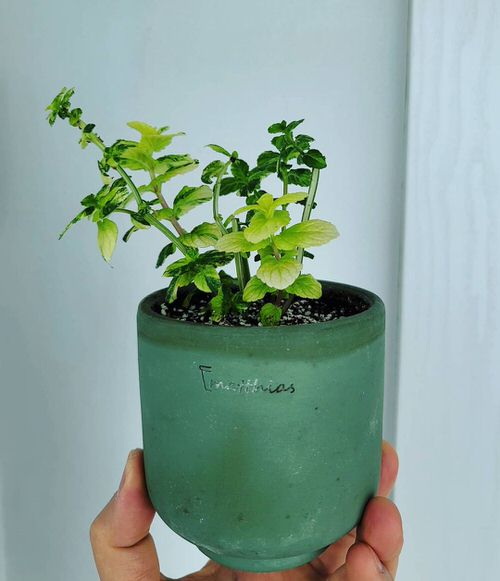
Botanical Name: Mentha canadensis
USDA Zones: 4-10
This mint variety is native to most of Canada and the United States. It is among the most sought-after ones in North American gardens.
21. Margarita Mint
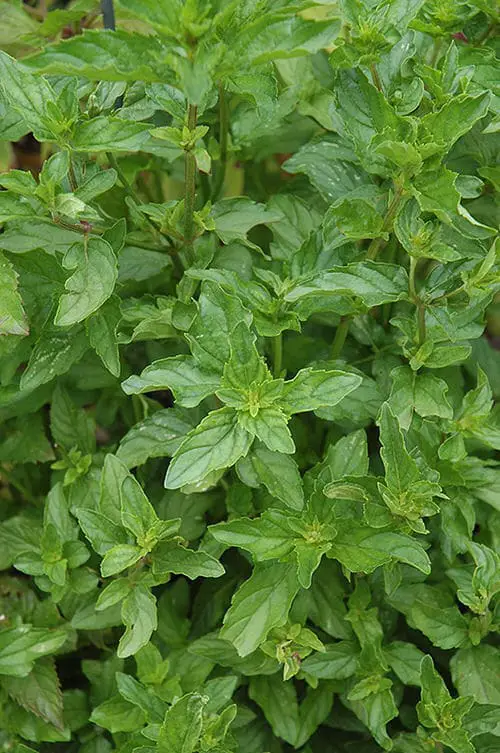
Botanical Name: Mentha ‘Margarita’
USDA Zones: 5-8
If you do not prefer the taste of mojito, this is the mint variety you need to grow. Margarita has a scent of lime that adds up as the perfect garnish to a margarita drink.
22. Red Mint
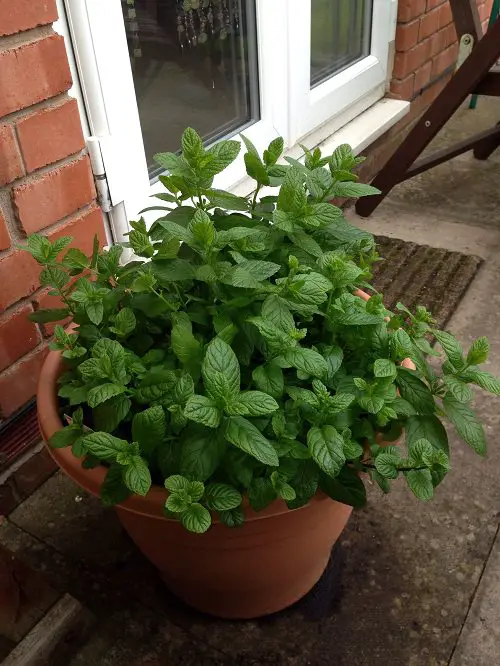
Botanical Name: Mentha rubra raripila
USDA Zones: 3-9
This variety of mint is another delicious hybrid that is a combination of the watermint or Mentha aquatica, spearmint or Mentha spicata, and corn mint or Mentha arvensis. It is used in cocktails, garnish in lemonade or other cool beverages and refreshing teas.
Some Other Plants that are Also Called Mints
23. Lemon Balm

Botanical Name: Melissa officinalis
USDA Zones: 4a-9b
Lemon balm is a perennial herb from the mint family. People use it for making refreshing, lemony drinks because of its citrus-like scent, which is somewhat like lemongrass but with a hint of mint.
24. Calamint
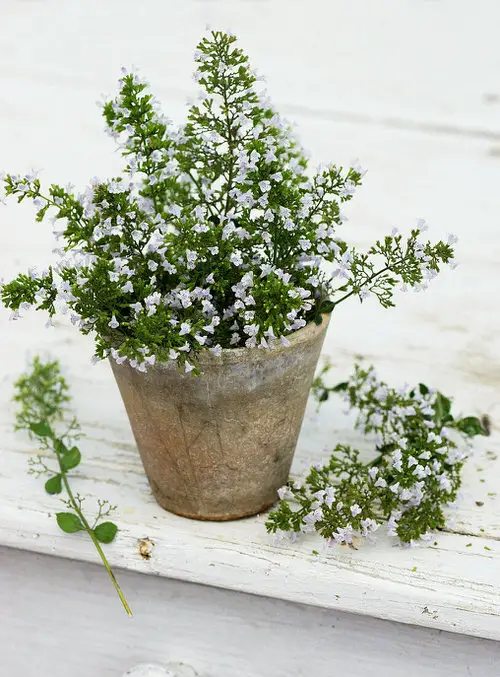
Botanical Name: Calamintha nepeta
USDA Zones: 5-7
This variety of mint has a very powerful fragrance similar to Pennyroyal and tastes somewhat like a cross between marjoram and spearmint. Calamint can sow by itself prolifically, so you need to get rid of the spent flower heads to stop seedlings.
25. Catnip

Botanical Name: Nepeta cataria
USDA Zones: 3-9
If you’re a cat parent, growing catnip is an excellent idea for your feline’s enjoyment, as it contains a compound called nepetalactone, which attracts almost 70-80% of cats. You can grow it indoors as well, on a windowsill that receives several hours of direct sun.
26. Licorice Mint
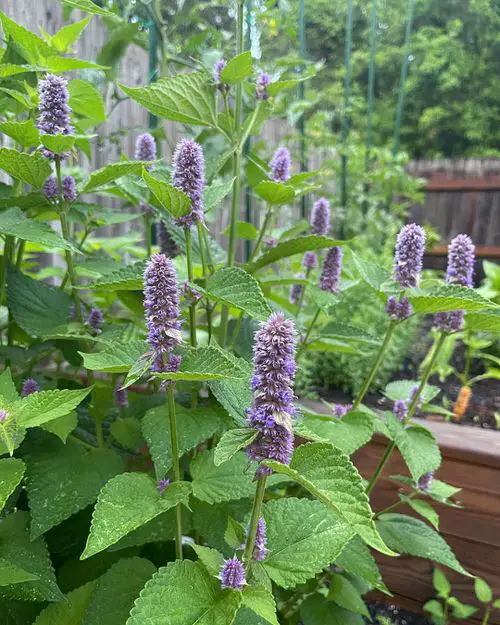
Botanical Name: Agastache rupestris
USDA Zones: 5-10
This variety of mint produces lovely purple flowers over serrated scented green leaves. The fresh leaves are used in baked items such as scones or cookies and in making custards, ice creams and beverages.
Check this article if you want to Grow Licorice Plant
27. Catmint
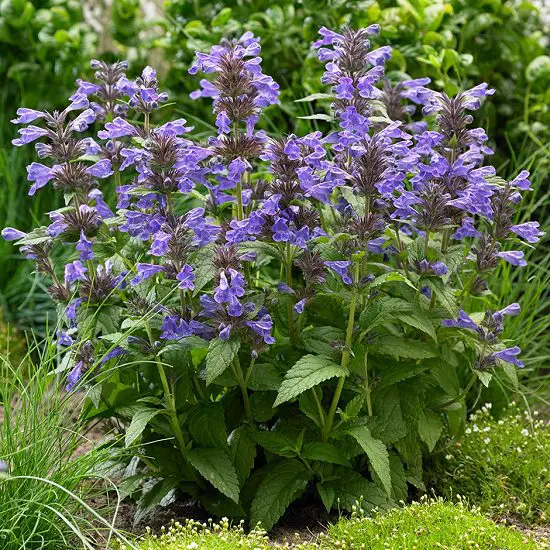
Botanical Name: Nepeta racemosa
USDA Zones: 3-9
Unlike catnip, catmint is an ornamental herb and can be used in vegetable gardens to deter insects and as an edging plant. Catmint also contains a similar compound, which makes cats euphoric.


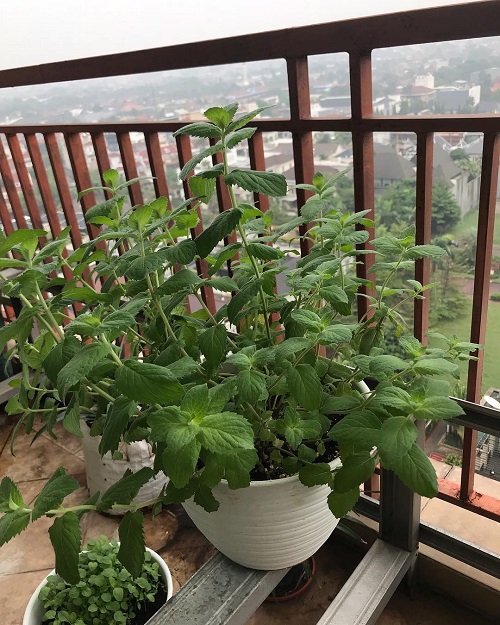


Thank you for this detailed descriptions, keep me informed of their uses
Pls send updates
thnks
Very informative, learnt alot thanks
Excellent, concise overview of my next herb garden for our new house.
The variety of scents flavours, uses and growing habits of these mints should make any gardener take note.
Thank you for sharing this
Where to buy all types of mints plants
Richters up in Canada has an amazing amount of herb seeds complete with growing and medicinal info
Hi & I love this article. The problem I have is finding the seeds.
Most places only have 6 of these mints.
Where can I find them all?
They may not have them all at once, but over time they do roll out a lot of specialized seeds. Try rareseeds.com
Thank you so much for the very much interesting information you have shared on your site. You really give me a lot of help… GOD BLESS YOU!!!
Where an I find the seeds for these mints?